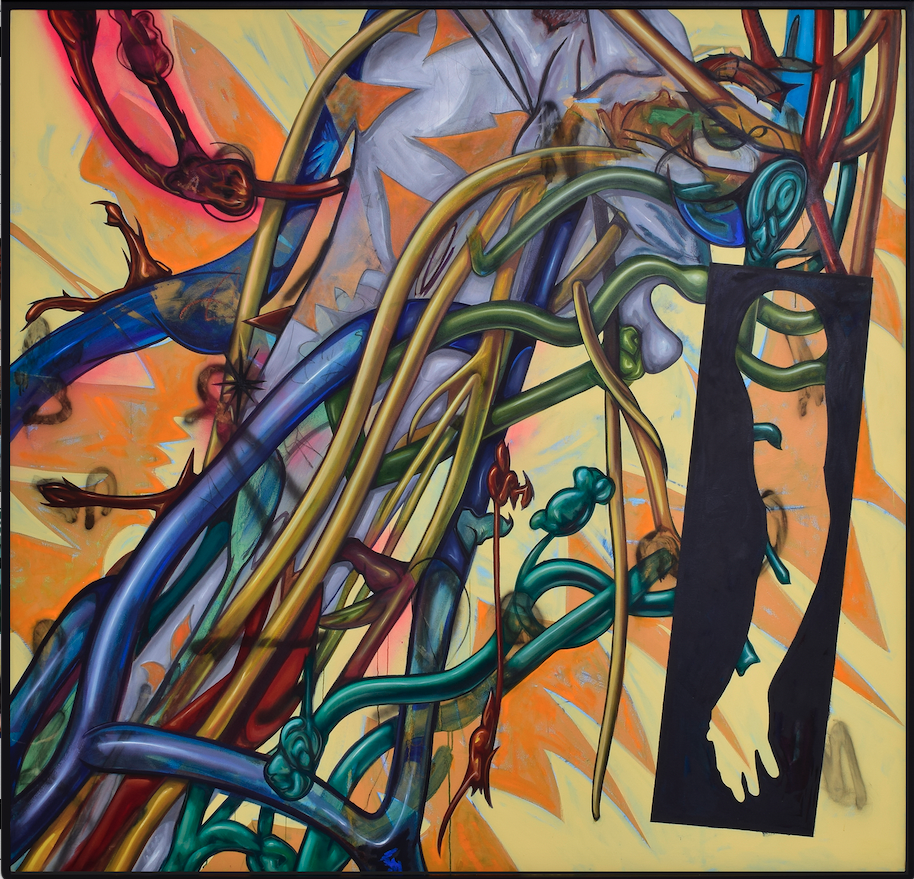When words cease to exist, let there be art.
Art is used to portray many things—nature, portraits, thoughts, feelings. In a recent research-artist collaboration, another thing got added to that list: medical diagnoses.
The Artist + Researcher Exhibition is a tri-university collaboration featuring the works of nine teams, with each team made up of a researcher (from Northern Arizona University, Arizona State University or University of Arizona) and a local artist. The idea is for the teams to work together to develop unique pieces of art that communicate the researcher’s area of study.
It all started in June 2021 at a sort of speed-dating event. Two clinical professors in NAU’s Department of Occupational Therapy participated, not to find a romantic partner, but to find an artistic collaborator. NAU professors Gretchen Bachman and Cindy C. Ivy met their match: artist Bill Dambrova.
Over the course of the next year, Bachman and Ivy would work closely with Dambrova—in the lab, classroom and art studio—in hopes of creating a visual representation of Complex Regional Pain Syndrome (CRPS).
“Art can stimulate questions and inspire new perspectives that spark epiphanies and solutions to problems,” said Bachman, assistant clinical professor in the College of Health and Human Services. “From the start, we knew we wanted to avoid making a medical illustration that attempted to describe the experience of CRPS for any given individual. We wanted the work to be about feeling and empathy for the person who has CRPS, so as a team, we decided that an abstract or stylized painting would be the best representation.”
The approach was simple. Bachman and Ivy would explain the disorder and their research, and Dambrova would internally process what was being said, letting his subconscious guide his initial expressive marks on the blank canvas. Though the first marks are not seen in the finished work, the energy he released while making them set up the back-and-forth interactions on the canvas that emulate what he imagined to be a constant, ongoing battle in a person’s body while they are fighting the disease. Through the fast and energetic painting process with the intention of exuding energy, frustration and pain that a person with CRPS may experience, a story began to form, and Dambrova pushed the marks in that direction.
Having no prior knowledge of the disease, Dambrova learned a lot about CRPS through his conversations with the researchers. These were his takeaways:
- The diagnosis and treatment algorithms are inconsistent and variable between individuals.
- There is no definitive cure.
- The disease feels like the area affected, usually a limb, is in constant and excruciating pain; paradoxically there are times the person with CRPS feels disconnected to the peripheral limb or affected area.
- Pain may be so debilitating that amputation may be discussed; however, amputation rarely solves the problem.
- The disease is disproportionate to the inciting event and may resolve over months or may last a person’s lifetime.
- A person’s quality of life may be significantly altered.
- People with CRPS often feel stigmatized by others, including health care providers.
Dambrova’s finished piece, “Invisible War,” is everything Bachman and Ivy hoped it would be.
“Our team’s goal with this project was to create a monumental, beautiful and powerful piece of artwork that acknowledges the invisible battles in the war between the person and their disease. Bill’s artwork is just that,” said Ivy, a clinical professor in the College of Health and Human Services. “The intention is to acknowledge the experiences of those diagnosed with CRPS and increase awareness to the general public.”
The art show, featuring all nine artist renditions of the various research, was unveiled at a soft opening on Friday, with plans for a grand opening on Sept. 2, in the Health Science Education Building at the Phoenix Bioscience Core.
“This show is a beautiful culmination of art and science and medicine through collaboration with community partners, local artists, supporters and the three public universities in Arizona,” Bachman said. “We hope that through art, without even knowing what the diagnosis is, people will feel something when seeing Bill’s representation of CRPS and walk away with increased empathy for the journey people with CRPS may experience.”
If you or someone you know suffers from CRPS and would like to be a part of future research, contact Cynthia Ivy or Gretchen Bachman for more information.



